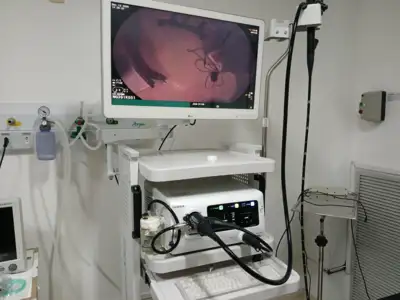Sespa begins to implement the Strategic Management Center for Patient Safety
The intention is to expand patient safety actions to all health coordinations in a transversal manner, from outpatient to hospital management
The State Department of Public Health (Sespa) formalized its adherence to the implementation of the State Center for Management and Strategy in Patient Safety (Negesp), an initiative of the National Council of Health Secretaries (Conass) that has already traveled through Brazilian states with the aim of strengthening governance and the quality of care in health services, focusing on the prevention of risks and adverse events.
To this end, managers and professionals linked to the Secretariat are participating in a workshop held from May 26 to 27, in the auditorium of Sespa, in Belém. The goal is to build an action plan aligned with the promotion of a culture of evidence-based practices, creation of indicators, cost reduction, and integrated strategies.
Present at the opening of the work on Monday were the State Secretary of Health, Ivete Vaz; the Deputy Secretary of Health Policy Management, Heloisa Guimarães; and the Deputy Secretary of Administrative Management, Edney Pereira – in addition to representatives from Conass.
The technical advisor of Conass, Carla Ulhoa, notes that Negesp is a fundamental strategy for reducing adverse events during care delivery, helps to reduce risks for patients, and minimizes waste in favor of safe and quality care in health units.
After this workshop, the center will be institutionalized within Sespa through an advisory committee representing all departments for strategic decision-making, through the definition of deadlines, indicators, and agreements.
“The intention is for patient safety actions to be carried out in all health coordinations in a transversal manner and that the level of expansion is at the outpatient, hospital, and management levels. By adopting this comprehensive approach, we can identify and mitigate risks at all points of contact with the patient, from error prevention to adverse event management,” says nurse Aryel Brito, coordinator of the State Center for Patient Safety (Nesp).
For the State Secretary of Health, Ivete Vaz, it is important to emphasize that patient safety should be viewed with a management and strategic perspective. “Once implemented in Sespa, it should interact with all departments to discuss indicators, strategies, and specific local actions,” she said.
The operationalization of the initiative will occur through the participation of sectors of Sespa, represented by Primary Health Care (APS); specialized and hospital care; planning, public health school, quality, regulation, contracting, among others.
The implementation of the initiative will be structured in three phases: the first, with the signing of the Adherence Term and the development of an action plan built by a technical team from the secretariat; the second, focused on monitoring the actions, which will be carried out by Conass in coordination with the sectors of Sespa; and the third, focused on strengthening the actions defined in the previous stages, as well as the implementation of the strategies planned for the operation of Negesp in the State.














